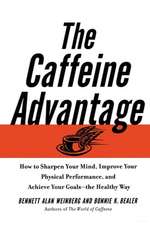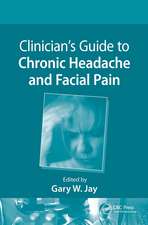Acute Pain Management - Rights Reverted: A Practical Guide
Autor Pamela Macintyre, Stephan A. Schugen Limba Engleză Paperback – 30 iul 2007
The book explores pain control in more complex patients such as those with acute-on-chronic pain, acute cancer pain or acute pain from a multitude of medical conditions as well as those who are opioid-tolerant have acute neuropathic pain, or are elderly. In addition to new chapters on changes in clinical practice, added to each section are key points that highlight the level of evidence available for that topic. These points have been reproduced with permission from the acute pain guidelines published by the Australian and New Zealand College of Anaesthetists and Faculty of Pain Medicine, Acute Pain Management: Scientific Evidence - both authors were members of the working party responsible for this document - and annotated according to the system recommended by the National Health and Medical Research Council (NHMRC) of Australia.
Preț: 281.53 lei
Preț vechi: 365.73 lei
-23% Nou
Puncte Express: 422
Preț estimativ în valută:
53.87€ • 56.24$ • 44.58£
53.87€ • 56.24$ • 44.58£
Carte disponibilă
Livrare economică 21 martie-02 aprilie
Preluare comenzi: 021 569.72.76
Specificații
ISBN-13: 9780702027703
ISBN-10: 0702027707
Pagini: 320
Ilustrații: Illustrated
Dimensiuni: 197 x 240 x 16 mm
Greutate: 0.42 kg
Ediția:3
Editura: Elsevier
Locul publicării:United Kingdom
ISBN-10: 0702027707
Pagini: 320
Ilustrații: Illustrated
Dimensiuni: 197 x 240 x 16 mm
Greutate: 0.42 kg
Ediția:3
Editura: Elsevier
Locul publicării:United Kingdom
Public țintă
Junior medical staff, nursing staff and medical and nursing studentsCuprins
Introduction. Organizational considerations. Assessment of the patient with acute pain. Pharmacology of opioids. Pharmacology of local anesthetic drugs. Non-opioid and adjuvant analgesic agents. Routes of systemic opioid administration. Patient-controlled analgesia. Epidural and intrathecal analgesia. Other regional and local analgesia. Non-pharmacological therapies. Acute neuropathic and persistent postacute pain. Non-surgical acute pain. More complex patients. Self-assessment questions.














